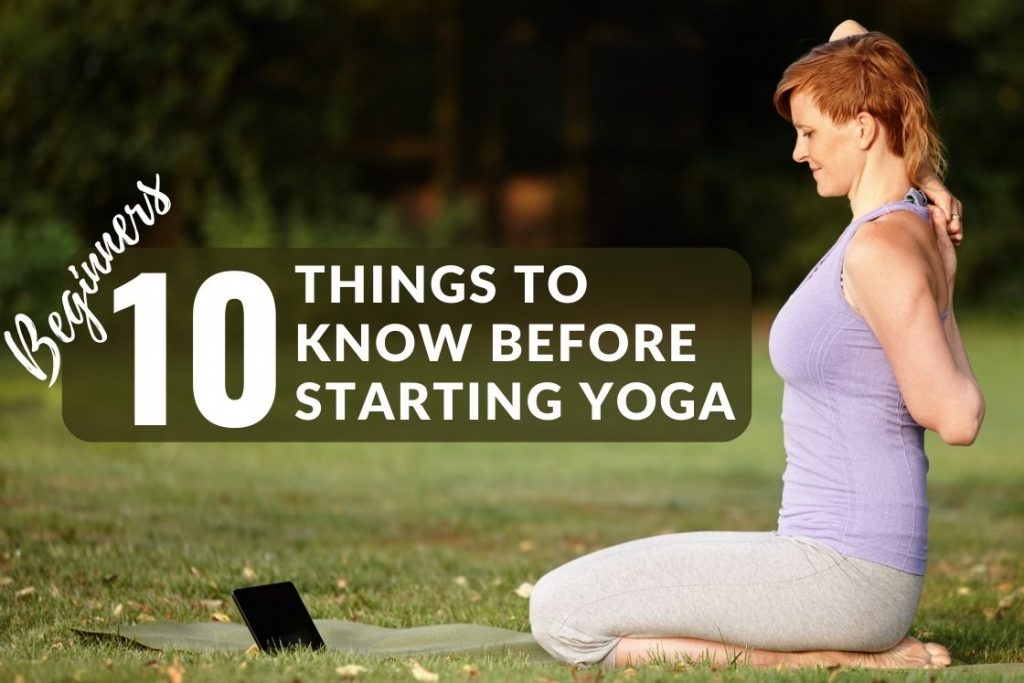
Beginning yoga can seem like a difficult endeavor, and the difficulties new practitioners confront can be intimidating. In actuality, there are numerous myths regarding yoga.
While others view yoga as a fancy kind of exercise, frequently practised by celebrities, many individuals see it as a light exercise method that may not very beneficial to them.
Yoga is now practised and appreciated all across the world because of its benefits. The benefits go much beyond what the majority of people initially consider, which are the gains in flexibility and balance.
Realizing the truth before unfolding your mat for the first time will help you properly appreciate yoga’s beginnings and make the most of your experience.
And to help you in understanding the true nature of yoga practice, we have come up with 10 things that you should know before you start yoga. When you know it in advance, you’ll feel more at ease about what to expect and how to prepare for your first yoga class.
Here are 10 things beginners must know before start practising yoga;
- Yoga is much more than fitness
- You do not need an Instagram body
- Using props or support is okay
- Focus on building the foundations
- Yoga will not give you instant results
- Wear comfortable and breathable clothes
- Learn from a yoga teacher before self-practising at home
- Listening to your body is crucial
- You will be sore for the first few days
- Slow and steady is the correct approach
1. Yoga is much more than fitness
Yoga is not only about performing asanas to stretch, strengthen and tone your muscles. It also involves conscious breathing techniques (pranayama), meditation, hand gestures (mudras), locks (bandhas), imbibing a healthy and disciplined yogic lifestyle, and many more things.
The end goal of yoga is to unify your mind and body to identify your true self. It’s a way of living that focuses on changing how you perceive yourself and how you deal with the ups and downs of everyday life.
So when you start your yoga practice, focus on holistic development rather than concentrating only on the physical component.
2. You do not need an Instagram body
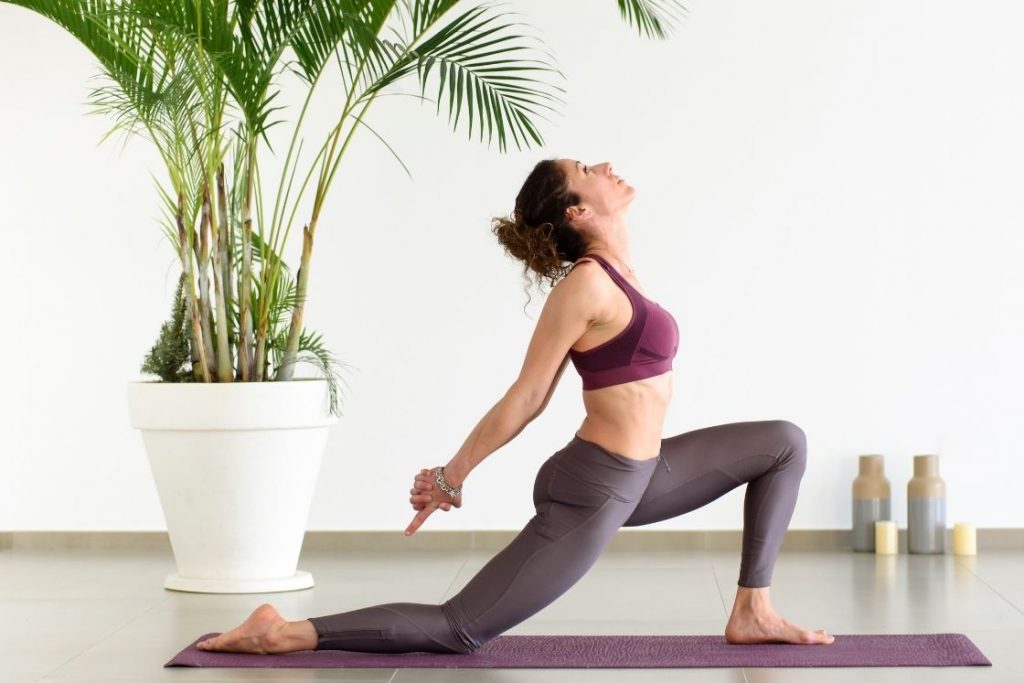
Most people fear away from taking up yoga practice because of the preconceived notion of a particular body type.
They have seen various pictures circulating on social media where thin and physically fit females or males are contorting their bodies into a pretzel-like shape. This is a complete myth!
You can start yoga irrespective of your fitness level, flexibility height, and weight.
The practice of yoga asana is meant to open, stimulate and engage your joints, muscles, and tissues. The asanas are designed to enhance strength, flexibility, and range of motion in various parts of the body.
The only precautions you need to take care of when you are injured, have a chronic medical condition, are pregnant or have been strictly advised not to indulge in physical activity.
As long as a person is willing to try something new without bias or expectations, they can step onto a yoga mat.
3. Using props or support is okay
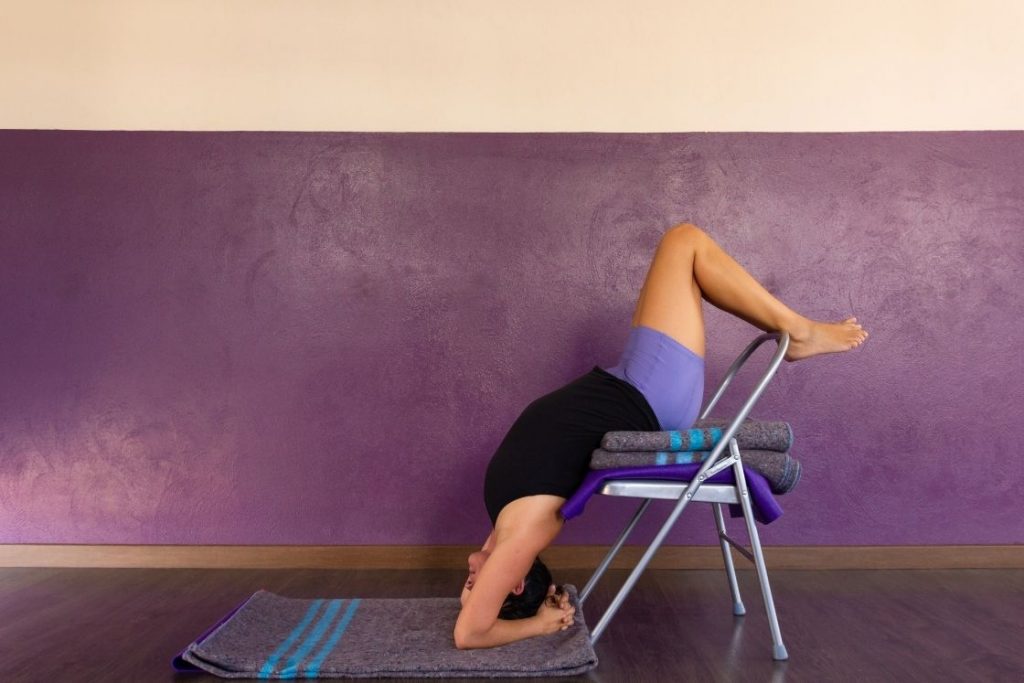
When you are just beginning your yoga journey, it is assumed that you will not have the flexibility to touch your toes or bend from your hips. For this reason, it is encouraged to use props such as blocks, straps, cushions, bolsters, blankets, chairs, etc.
Also read: How to use yoga strap + 10 strap stretches
You should never shy away to use a prop when required. Using props will help you get into the pose easily, without straining any muscles or joints.
In fact, there is one of the popular yoga styles that actively uses props, i.e, Iyengar Yoga invested by BKS Iyengar. According to him, when you can perfectly align your pose, you will automatically be able to enhance your self-awareness.
Moreover, you do not necessarily have to buy these props, they can be easily substituted with everyday household items such as books, belts, pillows, ropes, tables, etc. You will be able to better ease into the pose with the help of these props.
4. Focus on building the foundations
If you have just started yoga practice and you think that you should first try chaturanga dandasana (four-limbed staff pose), you are highly mistaken. You first need to concentrate you building your foundation by focusing on your hands and feet. They are some of the essential body parts that will bear your body weight.
You should focus on building stability through poses like Tadasana (Mountain Pose), Tabletop Pose, Vajrasana (Thunderbolt Pose), or other beginner poses.
Even while starting with pranayamas, you should build your lung capacity and breathing pattern through techniques like Dirgha Pranayama(Three part breathing), Anulom-Vilom, or Nadi Shodhana.
Going through such basic practices will help build a strong foundation for later stages.
5. Yoga will not give you instant results
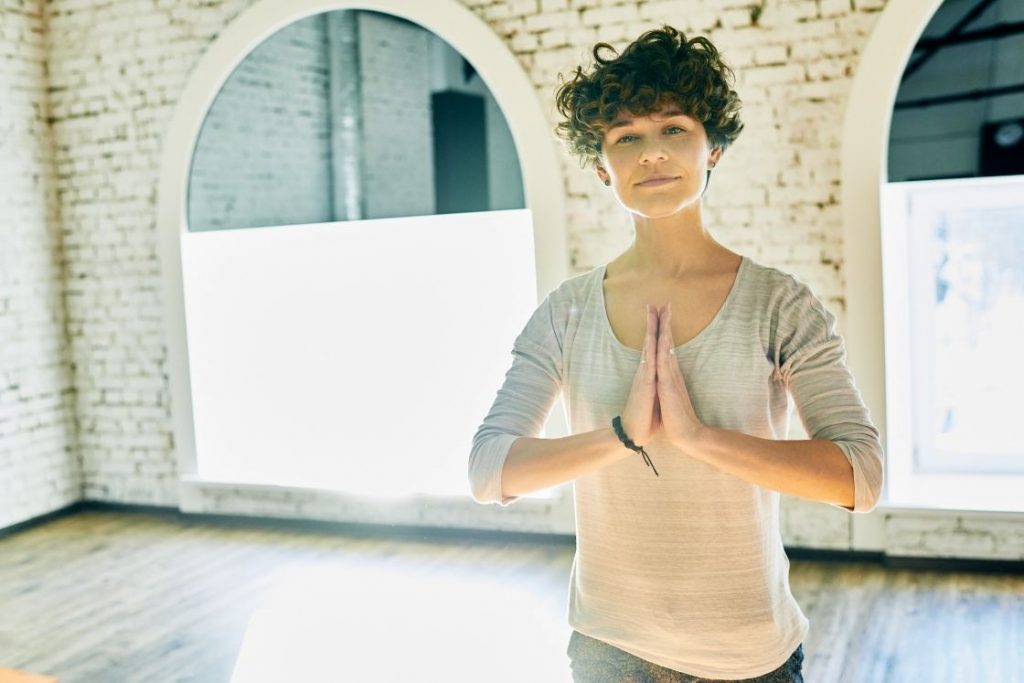
Typically speaking, yoga is not a high-intensity workout so you will not see an increase in flexibility and strength within 10-15 days. Yoga works from the ground up to give you holistic development.
Although each body is unique and takes time to assimilate, yoga often produces results within 6-12 weeks, when practised regularly and correctly under the instruction of a certified yoga instructor.
Long-lasting advantages, including improved flexibility and range of motion, long-term stress reduction, and better posture, are more likely to appear if you practice more frequently throughout the week.
6. Wear comfortable and breathable clothes
Yoga can be practised wearing any clothing, although loose, comfortable clothing is preferred because it makes movement easier. Yoga entails a variety of bending and stretching poses that work every area of the body so it becomes necessary that you wear attire that moves with your body.
You should be able to move, stretch, and breathe easily as it effectively absorbs perspiration. Good choices of clothing for yoga include a light, comfy T-shirt or tank top and a supportive sports bra. To avoid seeming baggy, wear something form-fitting, or cinch your pants’ waist with your shirt.
7. Learn from a yoga teacher before self-practising at home
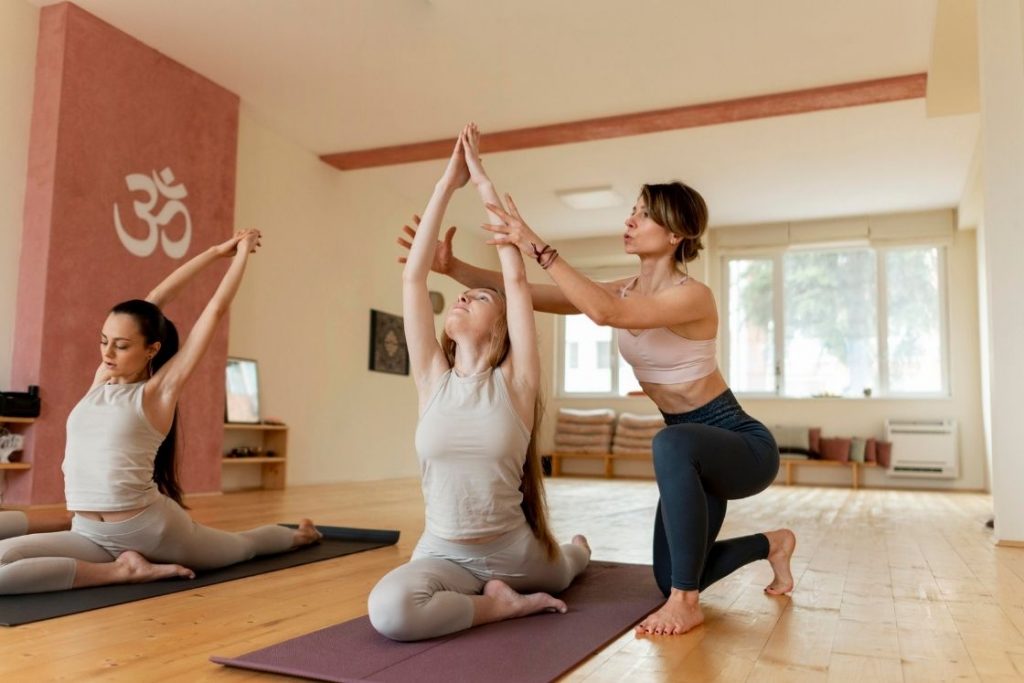
In general, if you’re unfamiliar with yoga, it’s preferable to visit a studio for hands-on training as you commence your practice.
In contrast to most online yoga classes or video-based platforms, instructors can provide students with specific feedback on their form and modification recommendations for certain poses. While some of them may be costly, the little nuances that the teacher will teach will be much better learned and understood when compared to a video-based platform.
However, if due to any situation you are unable to enroll in a yoga studio, look for beginner-friendly yoga videos produced by licensed yoga instructors.
8. Listening to your body is crucial
In yoga, if a posture isn’t comfortable for you, you are entirely permitted to skip it or ask the teacher to modify the pose so that you can get into it.
Yoga isn’t about outward appearances, you must always keep that in mind. You must pay attention to your body. While it’s necessary to push yourself to advance if your body tells you to stop, pay attention to it. The purpose is to observe your limitation and then work on them consciously.
Yoga focuses on letting go of restrictions and avoiding suffering. You are not required to move on to the subsequent stage if the current posture is incorrect.
9. You will be sore for the first few days
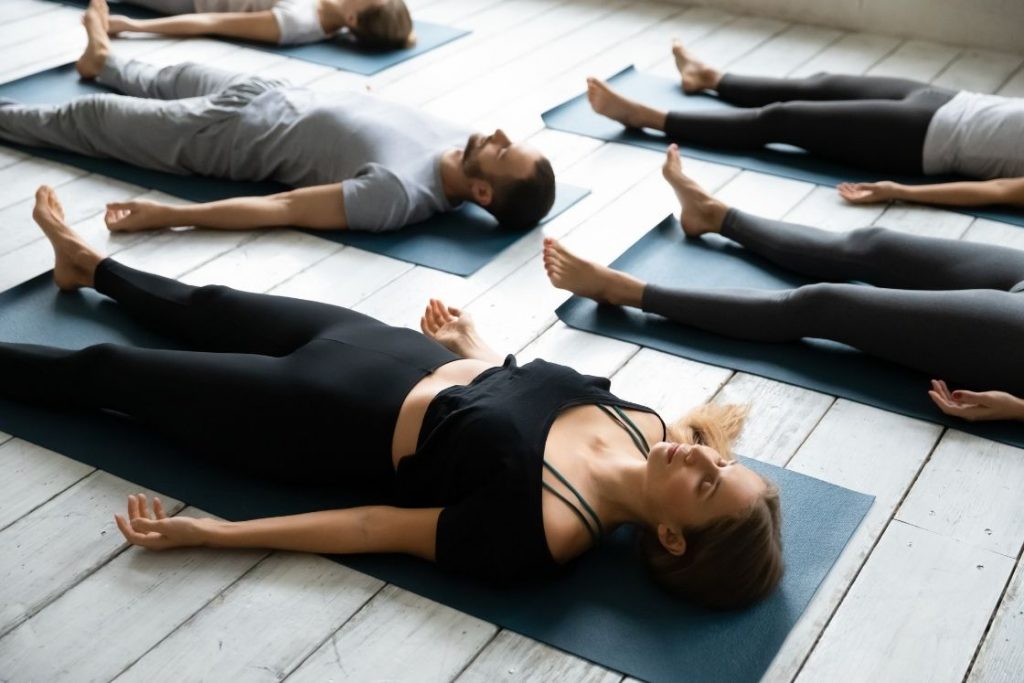
Even if you regularly engage in other activities, yoga typically works on muscles that aren’t frequently used, so you may feel a little sore after your first session.
In fact, it’s good for you to feel a little sore and in some pain after yoga. It implies that your muscles received a decent exercise and will emerge healthier than they had been. This soreness goes away on its own as your muscles get in tune with the yoga practice.
But being sore and being in pain does not mean the same thing. If you feel pain and strain in a particular area, you should inform your yoga instructor or seek medical attention.
10. Slow and steady is the correct approach
Take your time in the lesson and don’t hurry through any poses. Spend time understanding how a pose works on different parts of the body, how you feel being in the pose, and the effort you are putting in. You will make substantial improvement as you practice by moving slowly, steadily, and gently.
It can also enhance your awareness, help you avoid injury, and enable you to concentrate more easily. Just understand that learning how your body feels often takes six to eight classes.
Conclusion
Before starting a new practice, we have different images or ideas about that in our minds. And that is completely fine. The question is; are you just a believer or a real doer?
There is a lot to experience in yoga but one must get experience only out of self-practice which one can realize thyself, not what intellectually sounds good to you just by listening to others.
So keeping the above points in your mind, practice yoga with complete awareness and see which of the above things you find right in your practice. You will realize most of them are true.
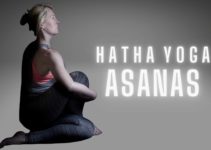
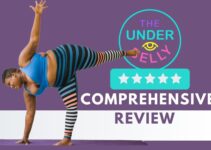
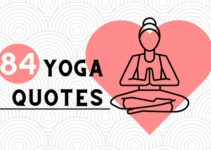
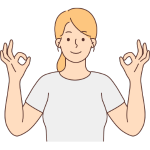
 Oct 24th to 30th
Oct 24th to 30th Learn Mudras
Learn Mudras  Deepen Your Practice
Deepen Your Practice  Find Inner Peace
Find Inner Peace